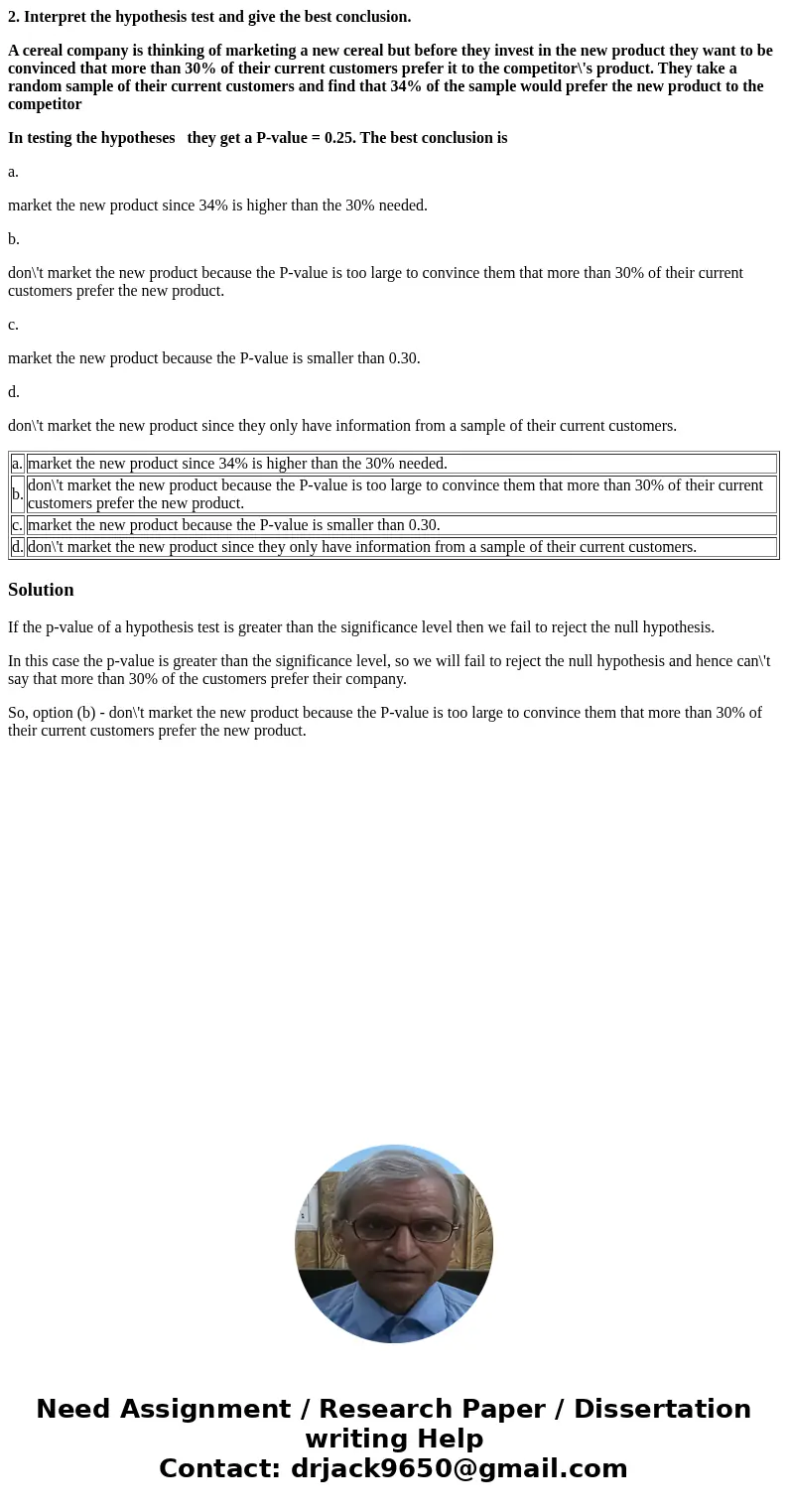2 Interpret the hypothesis test and give the best conclusion
2. Interpret the hypothesis test and give the best conclusion.
A cereal company is thinking of marketing a new cereal but before they invest in the new product they want to be convinced that more than 30% of their current customers prefer it to the competitor\'s product. They take a random sample of their current customers and find that 34% of the sample would prefer the new product to the competitor
In testing the hypotheses they get a P-value = 0.25. The best conclusion is
a.
market the new product since 34% is higher than the 30% needed.
b.
don\'t market the new product because the P-value is too large to convince them that more than 30% of their current customers prefer the new product.
c.
market the new product because the P-value is smaller than 0.30.
d.
don\'t market the new product since they only have information from a sample of their current customers.
| a. | market the new product since 34% is higher than the 30% needed. |
| b. | don\'t market the new product because the P-value is too large to convince them that more than 30% of their current customers prefer the new product. |
| c. | market the new product because the P-value is smaller than 0.30. |
| d. | don\'t market the new product since they only have information from a sample of their current customers. |
Solution
If the p-value of a hypothesis test is greater than the significance level then we fail to reject the null hypothesis.
In this case the p-value is greater than the significance level, so we will fail to reject the null hypothesis and hence can\'t say that more than 30% of the customers prefer their company.
So, option (b) - don\'t market the new product because the P-value is too large to convince them that more than 30% of their current customers prefer the new product.

 Homework Sourse
Homework Sourse